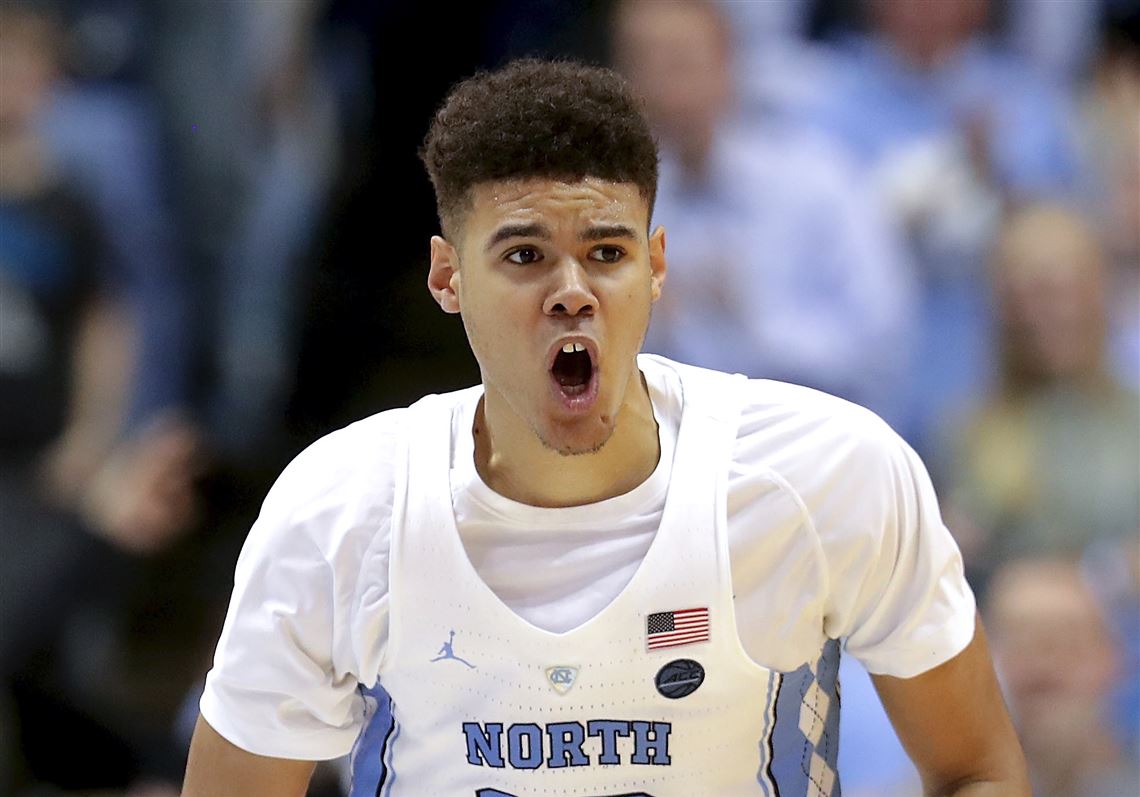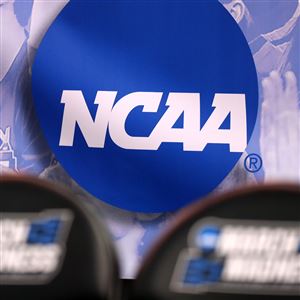After Cameron Johnson was granted a full transfer release from Pitt last June, his father spoke with Jay Bilas, the ESPN analyst who brought national attention to Pitt’s decision to prohibit Johnson, a graduate transfer, from going to a school within the Atlantic Coast Conference.
The ordeal raised questions about where Johnson would end up — he eventually landed at North Carolina — but it also shined a light on the rights of a player within the larger structure of college athletics.
“That’s going to change the landscape of the NCAA,” Gil Johnson recalled Bilas telling him. “That’s going to change the rule.”
Nearly one year to the day those two spoke, that rule changed. The NCAA Division I council on Wednesday enacted a proposal that will allow Division I athletes, beginning Oct. 15, to transfer to a different school and receive a scholarship once there without asking for a release from their current school, effectively making cases like Johnson’s a draconian relic.
“They should name it the Cam Rule,” Gil Johnson said Wednesday. “After all he went through, he deserves it.”
It was one of two reform-minded measures passed this week by the NCAA that ever so slightly shifts the balance of power between athletes and coaches/administrators. In another piece of legislation, the council ruled that Division I football players can participate in up to four games in a season without using a redshirt and season of competition.
As it relates to transfers, players opting to leave merely have to notify their current school of their intentions and within two business days, the school has to enter that athlete’s name into a national database. Once an athlete’s name is in the database, other coaches are allowed to contact them.
The NCAA’s new model eliminates a step in the process that has come under increased scrutiny in recent years. Previously, athletes would have to get permission from their current school to contact another school, therefore allowing their current school to forbid that player from going to certain universities, if they so choose. It was a rule originally enacted to discourage coaches from actively recruiting athletes from other schools, but it too often put an athlete’s future in the hands of a coach or administrator with arbitrary motives.
Johnson’s case — in which Pitt, citing a university policy, wouldn’t allow him to transfer within the conference — was far from an abnormality. Last year, Kansas State football coach Bill Snyder prohibited a departing wide receiver from transferring to 35 schools. Alabama football coach Nick Saban has taken criticism on separate occasions in the past two years for not allowing players to transfer within the SEC. Locally, Sheldon Jeter, a former Beaver Falls standout, was blocked from transferring from Vanderbilt to Pitt, where he ultimately ended up after spending a year at a Florida junior college. By his senior season, he was reunited with Kevin Stallings, his former coach at Vanderbilt who wouldn’t allow him to go to Pitt.
“There’s obviously a small few cases that people have highlighted, at times, where people didn’t receive their permission to contact. But it was also a safeguard to maybe keep coaches honest and not be tampering and make sure that there was just some protocol to the whole thing,” said Robert Morris coach Andy Toole, who told Sports Illustrated last year that coaches from other schools sent mail to his office to be given Rodney Pryor in the event he was released from his scholarship. Pryor joined Georgetown in 2016-17.
“Now I think it’ll just be .... a little bit more people shoot from the hip and throw their names on the transfer database and see what happens. It’ll be interesting to see how some of it plays out.”
Pitt coach Jeff Capel was unavailable Wednesday. Duquesne coach Keith Dambrot, however, described the rule as “a partial fix.”
The NCAA had previously toyed with removing the year-in-residence requirement — the one year a player in the most high-profile sports must sit out after switching schools — for certain undergraduate transfers, such as those with a certain grade-point average or players impacted by a coaching change. Even with the passage of Wednesday’s transfer proposal, the NCAA noted that individual conferences can still make transfer rules that are more restrictive than the national rule. The Big East, for example, doesn’t allow men’s and women’s basketball players to transfer within the conference.
The measure, while incremental, does represent progress.
“Most people don’t understand how much time we spend developing guys, but they still have the absolute right to leave,” Dambrot said. “That’s just the way it is. They should be able to go anywhere they want to go just like we [coaches] have the right to go anywhere we want to go.”
Pittsburgh sports news in my inbox? Yes, please.
Get the PG Sports Feed newsletter each weekday here.
In football, the organization’s decision regarding player participation could prove to be just as important.
Football coaches have long been accustomed to the practice of redshirting players, often as a way to allow freshmen to acclimate to the physical rigors of college football without losing a year of eligibility. Barring rare exceptions, Division I athletes have a five-year window to complete four seasons of competition.
Players originally scheduled to redshirt, however, frequently lost that year of eligibility after injuries to players ahead of them or any number of factors thrust them into action for only a handful of games or even plays. Under the previous rule, athletes could only play in games and preserve that season of eligibility if they had gotten injured and not played in more than three games.
It’s a change that, had it been enacted a year ago, could have helped a program like Pitt tremendously. Kenny Pickett, the Panthers’ presumptive starting quarterback next season, played in only four games as a freshman in 2017, beginning with an October loss to Syracuse in which he was forced in for a final play after the two players ahead of him weren’t able to be on the field. Under the new guidelines, he would be a redshirt freshman heading into the 2018 season, rather than a sophomore.
“I think the NCAA’s amendment of the redshirt rule for Division I football is an outstanding decision,” Pat Narduzzi said in a statement. “It allows a player who may be challenged by injuries to not lose an entire year of his college career. Moreover, our younger players will definitely benefit by having the opportunity to experience live game competition. It will keep them engaged and motivated throughout an entire season.”
Staff writer Omari Sankofa II and The Associated Press contributed. Craig Meyer: cmeyer@post-gazette.com and Twitter @CraigMeyerPG
First Published: June 13, 2018, 10:14 p.m.




















